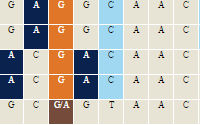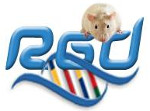Phenotype Annotations Click to see Annotation Detail View
Manual Human Phenotype Annotations - RGDObject Symbol | Species | Term | Qualifier | Evidence | With | Notes | Source | Original Reference(s) | RAD52 | Human | Colon cancer | susceptibility | IAGP | | DNA:SNPs:3'utr: (rs1051669 and rs11571475) (human) | RGD | | RAD52 | Human | Neoplasm of the large intestine | susceptibility | IAGP | | DNA:SNPs:3'utr: (rs7963551 and rs11226) (human) | RGD | | MRE11 | Human | Neoplasm of the rectum | susceptibility | IAGP | | DNA:SNP:3'utr: (rs2155209) (human) | RGD | | NBN | Human | Neoplasm of the rectum | susceptibility | IAGP | | DNA:SNP:3'utr: (rs14448) (human) | RGD | | XRCC5 | Human | Neoplasm of the rectum | susceptibility | IAGP | | DNA:SNP:3'utr: (rs1051677) (human) | RGD | | | ||||||||||||||||||||||||||||||||||||||||||||||||||||||||||||||||||||||||||||||||||||||||||||||||||||||||||||||||||||||||||||||||||||||||||||||||||||||||||||||||||||||||||||||||||||||||||||||
|
|




















